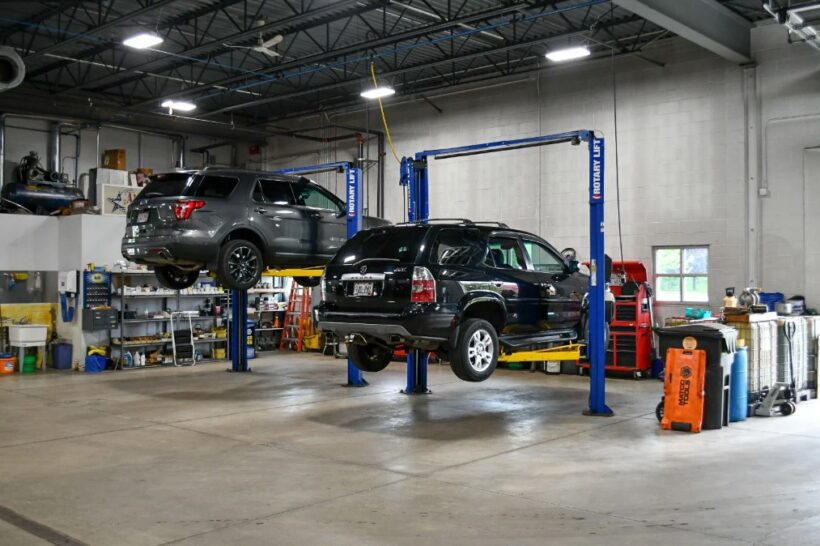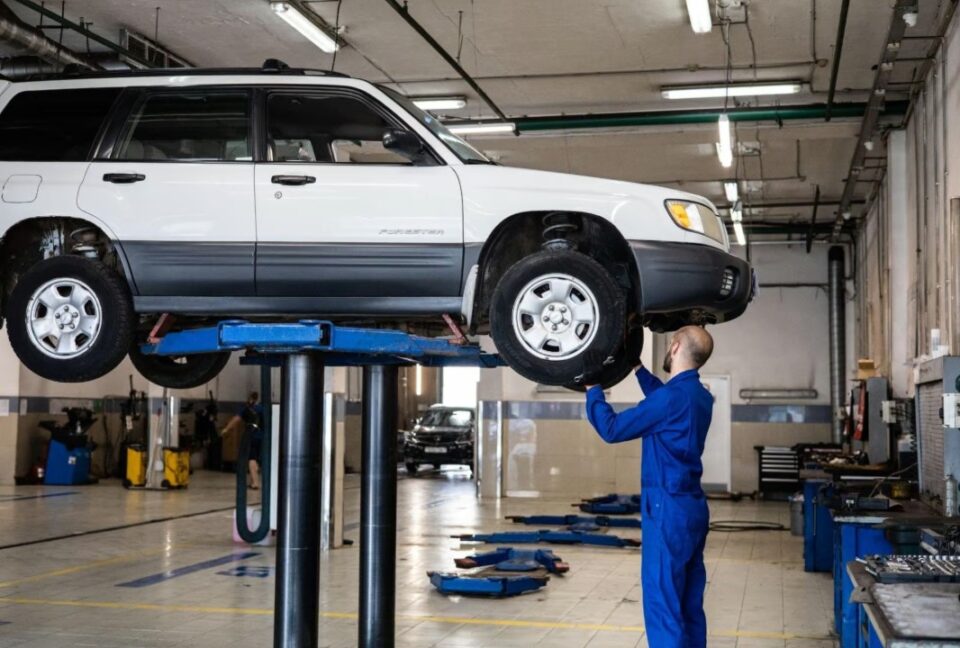Perception builds trust. When your garage looks established, structured, and professional—even if it’s a one-man show—you get better clients, stronger referrals, and higher-ticket jobs. Customers want reliability. What they see tells them everything they need to know.
You don’t need a large staff or 300 square meters of floor space to give off the impression of size. You just need control over the visual and digital signals that shape customer confidence.
Step 1 ─ Expand Your Digital Footprint First
Most customers will look you up before they ever step foot in your shop. What they find there determines whether they trust you—or move on. A strong online presence levels the playing field. It puts you on the same screen as larger competitors.
Start with your website. It should be simple, clear, fast to load, and mobile-friendly. If you’re not sure what to include, cover the essentials:
- Logo and shop name
- Services list with pricing or timeframes
- Gallery of before-and-after photos
- Testimonials from real customers
- Contact information and working hours
- Booking form or contact form
Don’t forget Google. Claim your Google Business Profile and make sure your details match your website. Upload current images of your workshop, your team, and your signage.
In addition, get your business listed on platforms that act as trust signals—like a business directory. Being listed on Acompio increases your visibility and signals to customers that your shop is legitimate. It also allows people to review your services, compare your offering to others, and find you by category or location.
Customers often assume that businesses listed in directories are better organized, more established, and part of a broader network. It puts your name where people are already searching.

Step 2 ─ Use Branding to Look Enterprise-Level
Good branding makes a small operation look like a growing enterprise. Bad branding makes even a large team look disorganized. You can’t afford that.
You need to build a visual identity and apply it across every channel. That includes:
- Your logo
- Your uniforms (even if it’s just a shirt with your logo on it)
- Your invoices, quotes, and receipts
- Signage on your shop and vehicles
- Fonts, colors, and tone used on your website and social media
The best part? You don’t need to spend thousands. Use free design platforms like Canva for templates. Order affordable signage or stickers from local printers. Get branded shirts made in small batches.
A cohesive identity builds trust. When every touchpoint feels consistent, it tells the customer that you run a tight operation. They don’t care if it’s just you and one assistant—they care that your tools are clean, your email has a signature, and your logo matches your social profile photo.
Consistency creates an invisible structure around your brand. It makes people think you have systems, protocols, and high standards—because only structured businesses do branding well.

Step 3 ─ Rearrange Your Space to Maximize Perception
Your floor plan sends messages. Every tool left out, every cluttered corner, every unnecessary object chips away at the professional image you want to build.
To make your space look larger and more efficient:
- Remove anything not used daily
- Use vertical storage to free up floor space
- Keep walls light-colored and free from visual noise
- Use mirrors in strategic areas to reflect light
- Mount tools neatly in visible, accessible spots
- Keep oil cans, cables, and boxes out of view
Limit signage to clean, minimal boards. Don’t tape handwritten notes to walls or doors. Replace cardboard boxes with uniform containers. Invest in rolling tool cabinets if you can—order and mobility look professional.
Add LED lighting. Bad lighting makes a small space look dull and depressing. Good lighting adds sharpness and vibrancy. That matters to customers.
Finally, control scent and sound. A clean-smelling, quiet shop with background music feels calm and professional. It doesn’t matter if it’s a single-bay space—you’re giving customers a polished experience.

Step 4 ─ Build the Illusion of High Volume Activity
Busy shops feel trustworthy. People assume that if you’re in demand, you must be good.
If you’re just starting or you only take a few cars per day, you can still look active. The trick is to make sure your channels show constant movement and engagement.
Use these strategies:
- Post service stories every day.
Take short clips or photos of the cars you’re working on. Add captions with details: “Brake pad replacement for a local client today” or “Diagnostics session for a Ford Ranger that wouldn’t start.” - Use your waiting area.
Even a simple bench with a water bottle, hand wipes, and magazines makes it look like you’re set up for foot traffic. Clients don’t always wait, but the setup shows preparedness. - Get reviews and respond to them.
The more reviews you have, the more active your shop looks. Thank reviewers publicly. Use their feedback in posts or website testimonials. - Book smart.
Instead of bunching all your work into one shift, stagger jobs so the shop always has something going on. Visibility of work being done equals perceived volume. - Talk like you’re in demand.
Use phrases like “Next available opening is Thursday,” or “We’re fully booked until the weekend.” That tone reinforces the idea that you run a busy schedule—even if it’s self-managed. - Stay visible in local communities.
Join Facebook groups for your area. Comment on local posts. Sponsor a small event or offer free diagnostics to promote your name. Momentum builds fast once locals know you.
All of this builds momentum. It doesn’t require lying or exaggerating. You’re simply highlighting what’s already happening—and packaging it in a way that makes your shop feel busy, responsive, and trustworthy.

Step 5 ─ Think Bigger Than Your Space
Your workspace may be small, but your brand doesn’t have to be.
When people walk into a clean, organized, well-lit shop with professional branding and fast online booking—they think you run a big operation. When they see your name in a trusted business directory, with great reviews and a professional logo, they assume you’re on par with the biggest garages in town.
And that’s the goal: control what customers see, so they never focus on what you lack.
Conclusion
Small doesn’t mean small-time. What matters is how you position your business in the eyes of your customers. The right branding, layout, and online presence can give your shop the reputation of a much larger operation. Most people don’t care how big your workspace is. They care about how professional, responsive, and trustworthy you seem the moment they find you.
When you stay visible online, maintain a clean and functional environment, and look consistent across every touchpoint, you take control of that perception. That’s how you compete with bigger names without adding square footage. Focus on looking organized, appearing in demand, and staying discoverable on trusted platforms. It’s not about faking size. It’s about projecting confidence—and giving clients no reason to question your capability. That’s what builds loyalty, referrals, and long-term growth.

